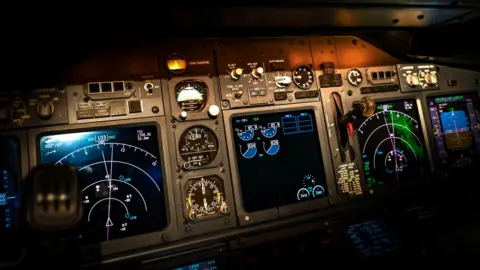The incident involving Jeju Air Flight 2216, which tragically crash-landed in December 2024, has sparked intensive scrutiny regarding pilot actions leading up to the disaster. Initial findings suggest that the crew may have mistakenly shut down the wrong engine following a bird strike that affected both engines shortly before the crash. The outcome was catastrophic: 179 passengers and crew members lost their lives, with only two flight attendants surviving.
As reported in an official interim investigation summary presented to the victims' families, the ill-fated aircraft was left operating solely on its damaged right engine after the left was shut down by the pilots. This premature decision likely compromised the plane's electrical power and thrust capability, severely impairing the pilots' ability to navigate a safe landing. During the emergency landing attempt, the aircraft’s landing gear remained retracted, causing it to skid along the runway, collide with a concrete barrier, and ignite.
Experts in aviation safety have underscored the urgency of assessing how pilots might misidentify engine issues during a high-stress situation. Joe Jacobsen, a notable safety expert with a history at both Boeing and the Federal Aviation Administration, highlighted the potential complications when cockpit displays fail to provide clear data. “If the pilots lost their displays after the bird strike, they may have had no clear indication of which engine was damaged,” Jacobsen asserted, underscoring the necessity of gathering comprehensive cockpit data to understand the events that transpired.
The investigation remains ongoing, with authorities advising caution before jumping to conclusions regarding pilot error. The findings thus far, however, are a stark reminder of the complex human factors intertwining with technological reliability in aviation safety protocols. Moving forward, investigators seek to piece together all available data to prevent future tragedies of this nature.
As reported in an official interim investigation summary presented to the victims' families, the ill-fated aircraft was left operating solely on its damaged right engine after the left was shut down by the pilots. This premature decision likely compromised the plane's electrical power and thrust capability, severely impairing the pilots' ability to navigate a safe landing. During the emergency landing attempt, the aircraft’s landing gear remained retracted, causing it to skid along the runway, collide with a concrete barrier, and ignite.
Experts in aviation safety have underscored the urgency of assessing how pilots might misidentify engine issues during a high-stress situation. Joe Jacobsen, a notable safety expert with a history at both Boeing and the Federal Aviation Administration, highlighted the potential complications when cockpit displays fail to provide clear data. “If the pilots lost their displays after the bird strike, they may have had no clear indication of which engine was damaged,” Jacobsen asserted, underscoring the necessity of gathering comprehensive cockpit data to understand the events that transpired.
The investigation remains ongoing, with authorities advising caution before jumping to conclusions regarding pilot error. The findings thus far, however, are a stark reminder of the complex human factors intertwining with technological reliability in aviation safety protocols. Moving forward, investigators seek to piece together all available data to prevent future tragedies of this nature.






















